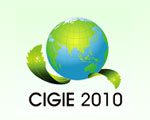'Time to clean up rural area pollution'
By Li Jing (China Daily)
2011-03-29 13:24
|
|
Countryside included for first time in national program to cut emissions
BEIJING - The program to reduce pollution between 2011 and 2015 will include emission targets for rural areas, Li Ganjie, vice-minister of environmental protection, said on Monday.
The country's vast rural areas, included in the program for the first time, are becoming more polluted than cities, he said.
"Pollution from agricultural sources already contributes to more than half of the country's total emissions," said Li. "It is high time that we addressed these problems."
The central government announced reduction targets for major water and air pollutants by 8-10 percent from 2011 to 2015.
But Li did not specify the contribution of rural areas in meeting these targets.
Between 2006 and 2010, the country saw a double-digit drop in emissions of major water and air pollutants. But pollution from rural areas was not included in the calculation - a reason some environmentalists say may explain why the country's ecology continued to deteriorate despite the statistics.
Ma Jun, director of the Institute of Public and Environmental Affairs, welcomed the move as people in rural areas have suffered severely from pollution caused by rapid industrialization and urbanization, but were not given adequate support and funding to tackle the problem.
"As a result, the countryside has become both a victim and producer of pollution," said Ma. The deterioration of the rural environment also threatens urban dwellers through food supplies, he said.
A total of 9 billion tons of household wastewater and 280 million tons of garbage are produced in rural areas every year, but most of the country's 600,000 villages do not have adequate treatment facilities.
Livestock has also been singled out by experts as a major culprit. Some 2.7 billion tons of livestock excrement is generated annually but only 20 percent is properly treated, according to Zhang Yongtai, an environmental expert from Nanjing Institute of Environmental Science.
The first national pollution census conducted in 2007 showed that agricultural emissions accounted for 43.7 percent of the country's chemical oxygen demand, a measurement of water pollution.
Agriculture also accounted for 57.2 percent of nitrogen emissions and 67.3 percent of phosphorus emissions, also indicators of water pollution.
The spread of industrial pollution into the countryside - especially from small illegal factories - has threatened people's livelihood, hindered sustainable development and sometimes caused social instability, Li said.
Between 70 to 80 percent of environmental complaints his ministry received each year come from rural areas, according to Li.
In the latest scandal, 4,500 tons of toxic sludge from an illegal aluminum smelter in Guangdong province flooded croplands on March 21, the Guangzhou-based Nanfang Daily reported.
Incidents like this revealed the weakness of environmental governance and law enforcement at county level, said Ma.
The central government planned to allocate 9.5 billion yuan ($1.45 billion) for 2011 and 2012 to improve the rural environment. But Li estimated at least 100 billion yuan from the central budget is needed to clean up 200,000 heavily polluted villages.
The money will be spent on protecting freshwater sources, constructing treatment facilities for household sewage, garbage, and human and animal waste. The construction of centralized and large-scale livestock breeding farms is also highlighted.
Li also vowed to strengthen numbers of environmental personnel at grassroots levels during the next five years.







